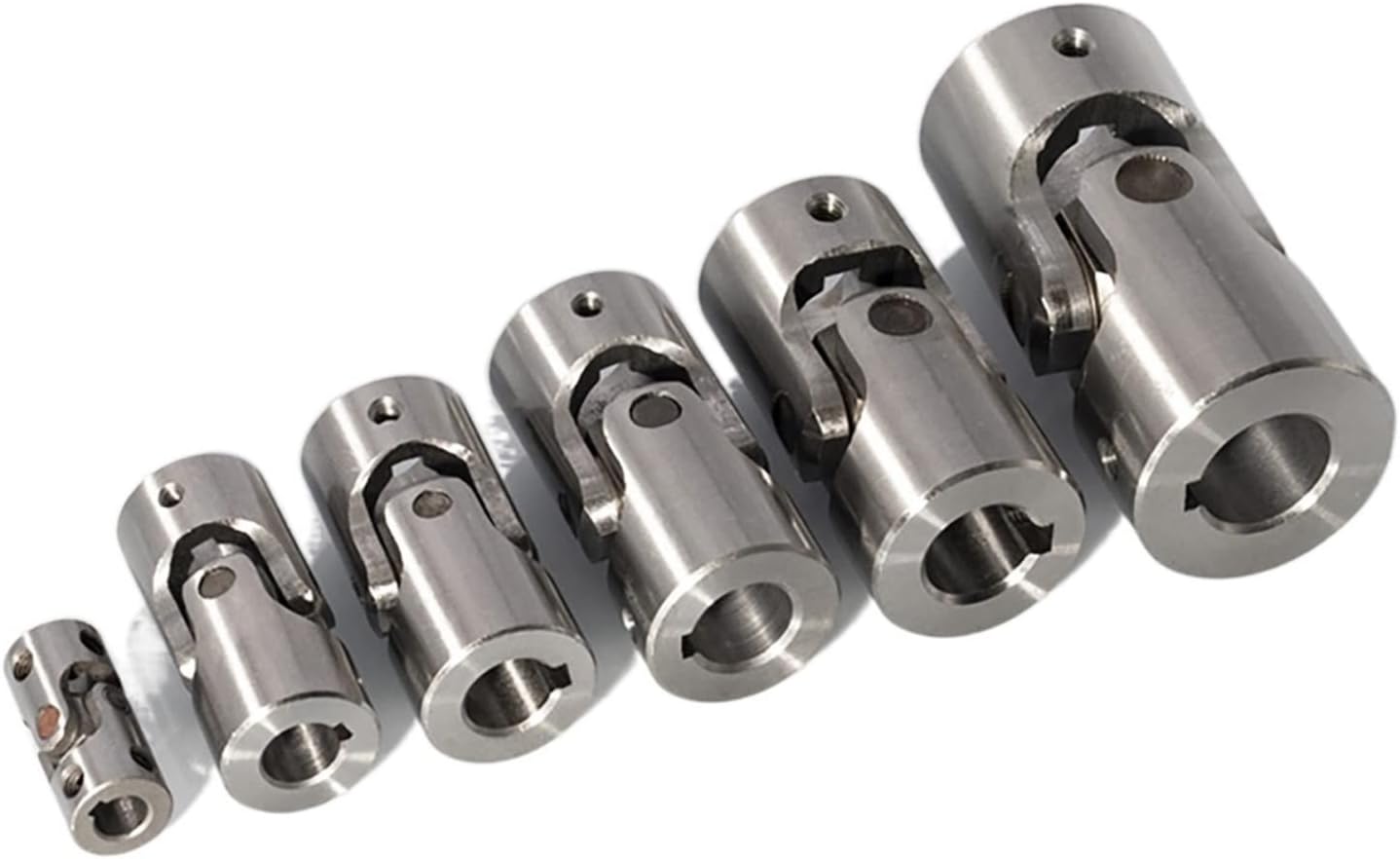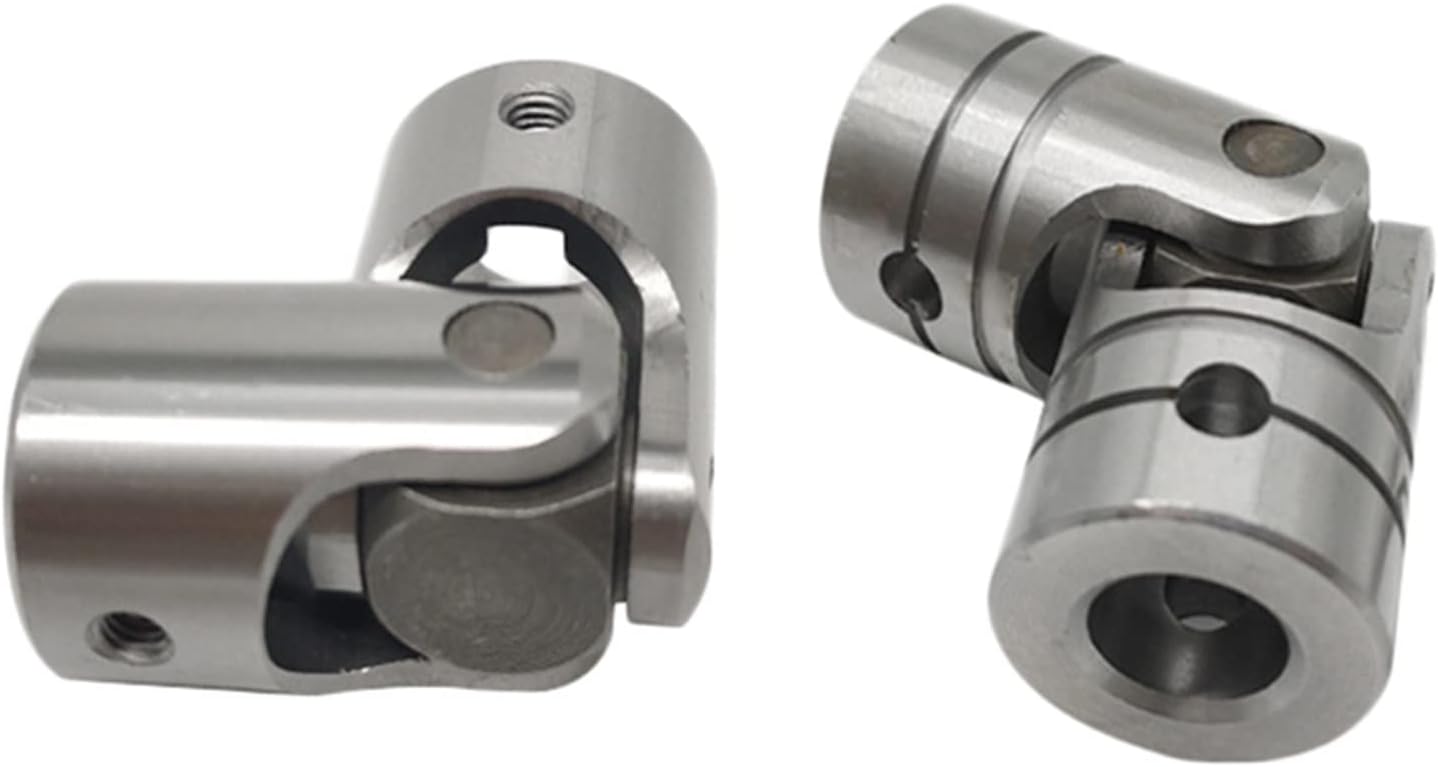Product Description
precision steering shaft double hardy spicer cardan moog drive car jeep truck automobile heavy duty small axle universal u joints
Application of precision steering shaft
Precision steering shafts are used in a variety of applications where high accuracy and durability are required. Some of the most common applications include:
- Automotive: Precision steering shafts are used in cars, trucks, and other vehicles to transmit the driver’s input from the steering wheel to the wheels.
- Aerospace: Precision steering shafts are used in aircraft to control the direction of the aircraft.
- Machine tools: Precision steering shafts are used in machine tools to control the movement of the cutting tool.
- Robotics: Precision steering shafts are used in robotics to control the movement of the robot’s arms and joints.
- Industrial equipment: Precision steering shafts are used in industrial equipment to control the movement of various components.
Precision steering shafts are made from high-quality materials, such as steel or aluminum, and are designed to withstand high levels of stress and vibration. They are also typically coated with a protective finish to prevent corrosion.
Precision steering shafts are an important component in many different applications. They help to ensure that the driver or operator has precise control over the movement of the vehicle, machine, or equipment.
Here are some of the advantages of using precision steering shafts:
- Precision: Precision steering shafts are very precise, and they allow the driver or operator to control the movement of the vehicle, machine, or equipment with a high degree of accuracy.
- Durability: Precision steering shafts are very durable, and they can withstand a lot of wear and tear.
- Cost-effectiveness: Precision steering shafts are typically more expensive than standard steering shafts, but they offer a number of advantages that can save money in the long run.
Overall, precision steering shafts are a valuable component in many different applications. They offer a number of advantages that can help to improve safety, efficiency, and productivity.
/* January 22, 2571 19:08:37 */!function(){function s(e,r){var a,o={};try{e&&e.split(“,”).forEach(function(e,t){e&&(a=e.match(/(.*?):(.*)$/))&&1

Maintenance Practices for Ensuring Cardan Coupling Reliability
To ensure the reliability of cardan couplings, the following maintenance practices are crucial:
- Lubrication: Regularly inspect and maintain the lubrication system. Ensure proper lubricant levels and use lubricants recommended by the manufacturer.
- Alignment: Maintain proper alignment between the input and output shafts. Misalignment can lead to premature wear and reduced efficiency.
- Regular Inspections: Perform visual inspections to detect signs of wear, damage, or corrosion. Regular inspections can help identify issues before they become major problems.
- Monitoring: Use sensors and monitoring systems to track the performance of the cardan coupling. Monitor temperature, vibration, and other parameters for anomalies.
- Torque Analysis: Analyze the torque requirements of the machinery system to ensure that the cardan coupling can handle the load without exceeding its limits.
- Periodic Maintenance: Follow the manufacturer’s recommended maintenance schedule. This may include replacing worn components, lubricant changes, and alignment adjustments.
- Record Keeping: Maintain detailed maintenance records, including inspection dates, lubrication schedules, and any repairs performed.
- Training: Ensure that maintenance personnel are trained to properly inspect, maintain, and troubleshoot cardan couplings.
By implementing these maintenance practices, operators can extend the lifespan of cardan couplings, prevent unexpected failures, and optimize the performance of machinery systems.

Challenges and Alignment of Cardan Couplings
Cardan couplings, while capable of accommodating angular misalignment, can pose certain challenges related to alignment. Here’s an overview of these challenges and how they can be addressed:
1. Angular Misalignment Limit: Cardan couplings have a limit to the amount of angular misalignment they can accommodate without causing excessive wear and vibration. It’s essential to stay within the manufacturer’s specified misalignment range.
2. Precision Assembly: Assembling a cardan coupling requires precision to ensure that the yokes and spider are aligned correctly. Misaligned assembly can lead to premature wear and increased vibrations.
3. Balancing and Vibration: Cardan couplings can introduce imbalances due to their design. Imbalances can result in vibration and reduce the overall efficiency of the system.
4. Lubrication: Adequate lubrication is crucial to minimize friction and wear in the bearings of the spider. Poor lubrication can lead to increased heat generation and accelerated wear.
5. Maintenance: Regular maintenance is required to monitor the condition of the coupling, including checking for wear, misalignment, and any signs of damage.
6. Torque Fluctuation: In applications with significant angular misalignment, cardan couplings may experience torque fluctuations due to the changing angles of the shafts.
To address these challenges:
– Follow the manufacturer’s guidelines for installation, alignment, and maintenance.
– Use precision tools and techniques during assembly to ensure proper alignment.
– Balance the rotating components to minimize vibration.
– Maintain proper lubrication to reduce friction and wear.
– Periodically inspect the coupling for wear, misalignment, and signs of damage.
– Consider using flexible couplings with higher misalignment capabilities for applications with extreme misalignment requirements.
Proper alignment, maintenance, and adherence to manufacturer recommendations can help maximize the efficiency and longevity of cardan couplings in mechanical systems.

What is a cardan coupling and how is it used in mechanical systems?
A cardan coupling, also known as a universal joint or U-joint coupling, is a mechanical component used to transmit torque between two shafts that are not in alignment but intersect at an angle. It consists of a cross-shaped yoke with two perpendicular shafts connected at its ends, allowing the transmission of rotational motion even when the shafts are at different angles to each other. Cardan couplings are widely used in mechanical systems to transmit torque and motion where angular misalignment is present.
Here’s how a cardan coupling works and how it is used in mechanical systems:
- Angular Misalignment: Cardan couplings are designed to accommodate angular misalignment between shafts. They can transmit torque between shafts that are at an angle to each other, typically up to 45 degrees. This ability to handle misalignment makes them suitable for various applications.
- Components: A cardan coupling consists of a cross-shaped yoke with four arms, two of which are connected to the input and output shafts. The two remaining arms are connected to each other through a bearing, which allows for the rotational motion.
- Transmitting Torque: As one shaft rotates, it imparts angular motion to the yoke. This angular motion is transferred to the other shaft through the bearing, allowing torque to be transmitted even when the shafts are not collinear.
- Application: Cardan couplings are used in various applications, including automotive drivetrains, industrial machinery, agricultural equipment, and even in some aerospace systems. They are often found in places where it’s necessary to transmit torque between non-parallel shafts while allowing for some degree of flexibility.
- Advantages: Cardan couplings are simple in design, relatively compact, and provide a cost-effective solution for transmitting torque in cases of angular misalignment. They are also capable of transmitting high torques while compensating for misalignment.
- Limitations: Cardan couplings have limitations in terms of the angle they can handle, and at extreme angles, they may produce uneven torque output due to their design. They can also introduce some degree of vibration and require periodic maintenance.
In mechanical systems, cardan couplings are used in various applications where the alignment between shafts cannot be maintained, such as in vehicles with independent suspension systems, industrial machinery with non-parallel shafts, and applications where flexibility and torque transmission are required despite angular misalignment.


editor by CX 2024-05-02